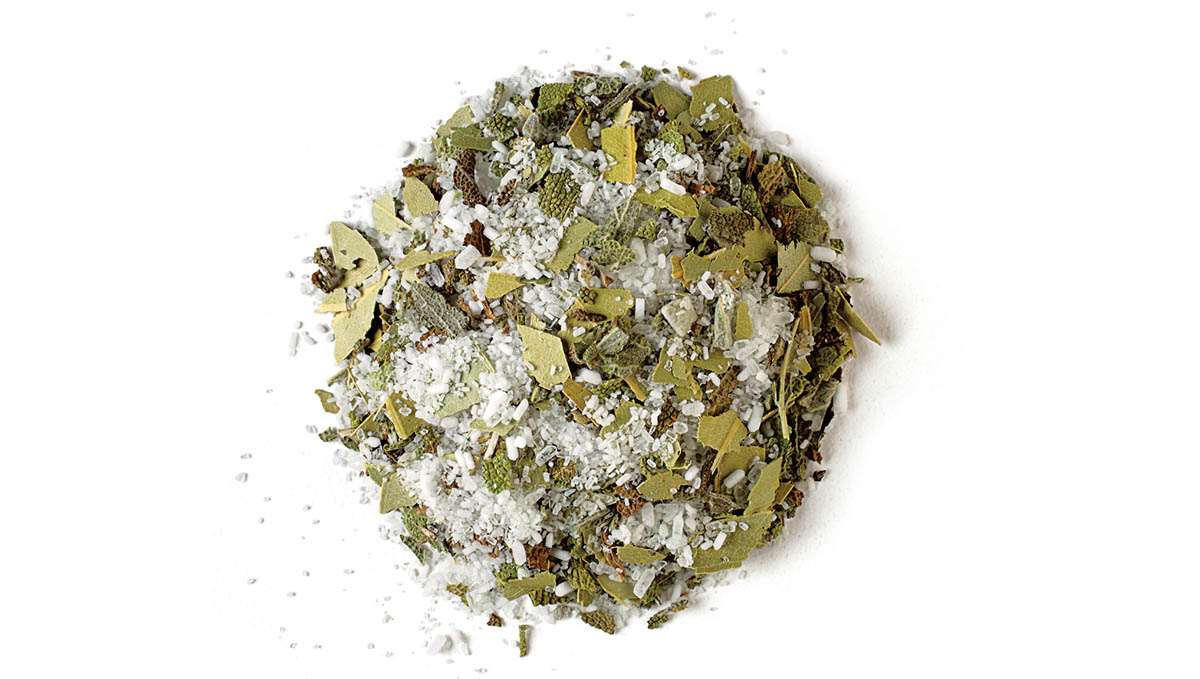
Following are some of my favorite herbal recipes formulated especially for men’s health and well-being. Most of these recipes are tonics — that is, herbs and formulas that help nourish and tone the body’s systems and can be used on a regular basis to promote vibrant, long-lasting health. Tonics can also be incorporated into protocols to address specific health issues.

This is how medicine should taste! Turmeric, a well-known anti-inflammatory herb, is renowned for its benefits for joint and muscle health, heart health, and fighting infections and lingering illness. You can often buy fresh turmeric these days, but for this recipe dried, finely ground turmeric works best.
This is a basic formula. You can use other herbs with or in place of the turmeric — for example, hawthorn for heart health, rhodiola for energy, and maca or ashwagandha for sexual health and vitality. Just be sure all the herbs are finely powdered.

Combine the chocolate and coconut oil in the top of a double boiler. Bring an inch or two of water in the lower pan to a boil, then reduce the heat to low. Heat, stirring, until the chocolate and coconut oil are melted and well combined. Remove from the heat and stir in the rest of the ingredients. Pour the mixture into candy molds or onto a thin baking tray. Let cool. When firm but not fully hard, cut into squares. Because of the coconut oil, this chocolate will melt if it gets warm. Store in the refrigerator or a cool area.
To use: Have one or two small pieces a day.
Here’s another variation of a “candy” that’s good for you! This particular combination of herbs is formulated to give you sustained energy, not from stimulants, but from nutrient-dense herbs that nourish and support endocrine gland function.

1. Combine the nut butter, tahini, and honey in a large bowl and mix until smooth. Stir the herbal powders together in a separate bowl, then add to the nut butter mixture and mix well. Add the chopped nuts, coconut, chocolate chips, and dried cranberries, and mix well; you may need to use your hands. Work in enough unsweetened cocoa powder to thicken the mixture to a doughlike consistency.

2. Roll the dough into walnut-size balls.

3. Finish the balls with a coating of your choice: shake them in a baggie filled with cocoa powder or coconut, or dip them into melted chocolate. Store the balls in an airtight container lined with wax paper in a cool spot, where they will keep for several weeks.
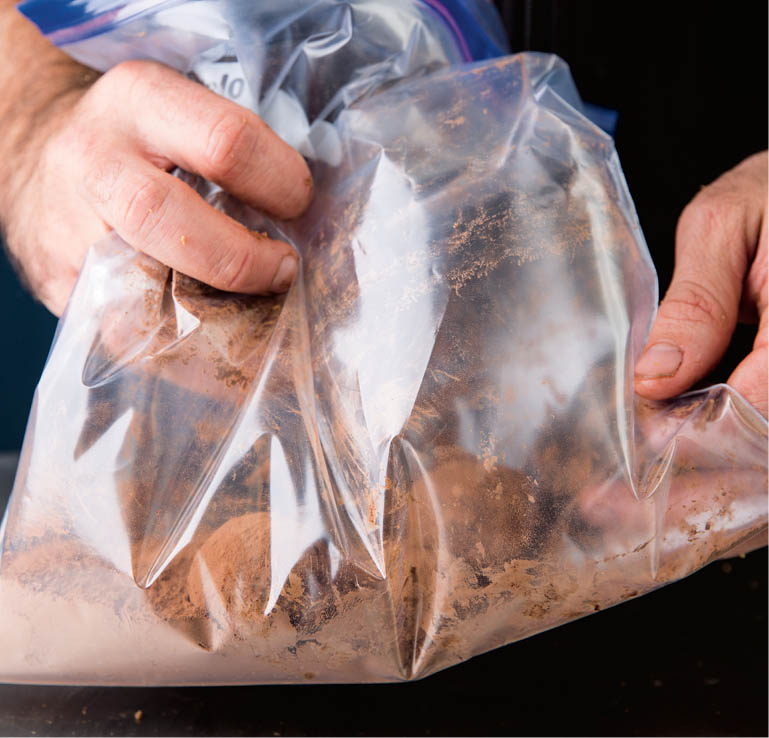
To use: The suggested dosage is two balls a day.
For extra zoom, add 1 ounce guarana powder and 1 ounce kola nut powder to the recipe. Guarana and kola are very high in caffeine, and because of this, they are not recommended for daily or long-term use, or for people who are excessively nervous and/or anxious, or who have hypertension or are on heart medication. But they do give extra zoom for a hard night of studying, that long hike, a marathon run, or a marathon night of lovemaking. The secret’s in the guarana!
One year I wanted to make something special for several of my older neighbors who were going on a holiday cruise to the Bahamas. These were all elderly couples who had been married for years. I was thinking that it might be a little fun to mix up one of my super energy balls for them to try out on their high seas adventure. I’m not sure if I was thinking “fun for me” or “fun for them”! Nevertheless, that night I mixed up the best balls I’ve ever made, adding every super energy herb that I had in my apothecary, as well as a few I probably shouldn’t have had (all legal, of course!). I added toasted coconut, organic cacoa, slivered almonds, and dried cranberries, and a few passion-promoting flavors like Chambord, some aphrodisiac herbs, and a tablespoon or two of guarana just to keep things moving. Then I carefully dipped each one in bittersweet chocolate. They looked like fine chocolate truffles, but they were in truth “chocolate trouble”! They say that ship was rocking and rolling through the Bahamas that night. . . . For months afterward, I would walk down the streets of my small Vermont town and strangers would come up to me asking, “Are you the woman who made those magic love balls?” Always followed by, “Would you make some for me?” I only wish I could remember that recipe!
Everything in moderation, even moderation.
Maca is a wonderful adaptogen (an herb that helps you adapt — whether to stress, assaults on your immune system, or environmental triggers — and supports stamina, endurance, energy levels, and immune function). Maca is also a sexual tonic, recommended for low libido, erectile dysfunction, and infertility issues in both men and women. And it is actually rather tasty, with a mild butterscotch flavor. These maca balls are super easy to make and ensure a daily dose of this excellent tonic herb.

Mix the nut butter and honey together until smooth and creamy. Stir in the maca powder. Add enough cocoa or carob powder to thicken the mixture to a doughlike consistency.
Using a teaspoon as a scoop, roll the dough into small balls. Pour some cocoa or carob powder into a baggie, drop in the balls, and shake to coat. Store the balls in an airtight container lined with wax paper in a cool spot, where they will keep for several weeks.
To use: Take two small balls daily.
Using the instructions for Maximum Maca Balls, you can make a herb “candy” balls with almost any of the herbs listed in this book. (See chapter 5 for a full run-down of herbs particularly useful for men’s health.) Just be sure the herbs are finely powdered. If an herb is particularly bitter or untasty, try adding a drop or two of peppermint essential oil to the mixture for a more refreshing flavor.
Herbal powders are a quick and easy “fix.” You can add powders to blender drinks and smoothies, soups, and other dishes. You can also mix a teaspoon of the powder in a cup of hot water, with a little honey, for a cup of “instant tea.” You can use different combinations of herbs according to your personal needs and what you have available. The herbs in this particular combination are nourishing, tonic, and adaptogenic, supporting overall well-being, a balanced stress response, and healthy reproductive function. For a boost of heart health, add 1 part hawthorn berry powder to the blend.

Mix the powders together. Store in a glass jar with a lid.
To use: Take 1⁄2 to 1 teaspoon two times daily.
Note: Licorice is not recommended for individuals who have high blood pressure or are taking heart medication.
A great morning shake, this drink will keep you energized all day. Because of the rhodiola, you may not want to drink it later in the day; it could keep you awake at night. For a late-afternoon pick-me-up, try leaving out the rhodiola and using ashwagandha instead. For an evening “get ready to play” drink, add kava and ashwagandha. For most people, kava increases body sensations and feelings of heartfulness.

Combine all the ingredients in a blender and blend until smooth. Add more milk if necessary.
This one of my all-time favorite recipes. An herbal tonic, this elixir builds strength and vitality by nourishing the endocrine glands. Though it can be used by both sexes, it is predominantly a masculine tonic, formulated with herbs used specifically for men.
This recipe invites your creativity; in fact, it yearns for it. Truthfully, I’ve never followed the exact recipe but always change it a little each time I make it. For suggestions on other herbs you might consider, see chapter 5.
Tincture the herbs in the alcohol, following the simple steps. For each cup of finished, strained tincture, add 1⁄2 cup black cherry concentrate. Shake well and rebottle. Your elixir is ready!
To use: A standard daily dose is about 2 tablespoons once or twice daily. Serve in a fine little goblet with a bit of water or juice, and sip as an aperitif. Try sipping it with your sweetie before a sensuous night.
Note: Most of these herbs can be bought in c/s (cut and sifted) form. While you can use powdered herbs, they settle on the bottom of the jar and are difficult to strain out. And be sure to use fruit concentrate, not fruit juice; if you use fruit juice, your elixir will ferment.
The first time I made this formula, I bottled it in an antique glass bottle that had engraved upon it the Tree of Life and the words long life. Thus was born the name Long Life Elixir. That first jar, brewed so many years ago, went to James Green, author of The Male Herbal, who said upon first tasting it, “Its flavor and culinary presence bring to mind words such as ‘exquisite’ and ‘elixir for the gods.’” Of course I’ve tinkered with the formula many times since — and you should feel free to do the same — but I think it’s only gotten better!
When you need that something extra on that oh-so-special night, try this blend from the love goddess herself, Diana De Luca, author of Botanica Erotica. This stuff is dangerously lip-smacking good — and daringly easy to prepare. Make it ahead of time and serve it at the beginning of a hot date. Add any other herbs you may desire.

Put the damiana leaves in a clean glass jar and pour the brandy over them. Cover and let sit for 5 days. Strain, reserving the liquid in a bottle.
Place the alcohol-drenched leaves in a clean jar and pour the spring water over them. Cover and let sit for 3 days. Strain, reserving the liquid. (You may now compost the damiana leaves.)
Gently warm the damiana-infused spring water over low heat. Add the honey and stir to dissolve. Remove from the heat and let cool. Add the infused brandy, vanilla, and rose water to taste and stir well. Pour the mixture into a clean bottle and seal with a tight-fitting lid. Let the liqueur mellow for 1 month or longer; it gets smoother with age.
To use: Drink as desired.
For a chocolaty version, when you add the brandy, also add 1⁄2 cup chocolate syrup, 2 or 3 drops of almond extract, and a touch more rose water. Perfect for chocolate lovers.
It’s easy to make and enjoy aromatic herbal wines. Use a good red or white wine, infuse herbs in the wine for 2 to 3 weeks, and strain. (Wine with herbs does not suffer in taste after the bottle is opened in the same way that plain wine does.) When you’re enjoying your evening glass of wine, you’ll also be getting the good qualities of the herbs. The herb blend given here supports a healthy libido and helps you de-stress and relax, but you can, of course, tailor the herbs to suit your own needs.

Combine the herbs in a large jar. Pour in the wine; it should cover the herbs by 6 to 8 inches. Cover with a tight-fitting lid. Let sit at room temperature for 2 to 3 weeks. If the herbs swell up, add more wine to keep them covered by 3 to 4 inches. Strain out the herbs and rebottle the wine.
To use: Enjoy as desired!
If you like a spicy wine, add a few cloves and a little cinnamon, ginger, and black pepper to the mix.
This is one of my older recipes that has really grown in popularity in recent years. You can buy different versions of it in stores, but I recommend making your own. It’s easy! With a blend of immune-stimulating, warming, and circulation-boosting herbs, fire cider helps keep your immune system toned and “on call,” keeps the blood circulating freely, and helps with any sluggish conditions. It’s an overall spicy, zesty tonic for good health. There are hundreds of variations on this recipe. Here’s the original.

Combine the horseradish, onion, garlic, ginger, and cayenne in a half-gallon canning jar. (With the cayenne, keep in mind that a little goes a long way.) Add enough vinegar to cover them by at least 3 to 4 inches. Cover with a tight-fitting lid. Place the jar in a warm spot and let steep for 3 to 4 weeks. Shake the jar every day to help in the maceration process.
Strain out the herbs. Warm the honey so it mixes easily, and stir it into the infused vinegar. Taste the fire cider; it should be sweet, hot, and spicy. Adjust the flavoring as desired. Store in a glass bottle; it will keep for several months in a cool pantry but even longer in the refrigerator.
To use: A small shot glass daily serves as an excellent tonic. Or take it by the teaspoon throughout the day if you feel a cold coming on. Take it more frequently if necessary to help your immune system do battle.
Note: Fire cider, like other hot, spicy tonics, is contraindicated for those who suffer from hypertension or who already have a lot of heat in their body (noted by such symptoms as a flushed appearance on the face, quickness to anger, and chronic tension).
I’ve added lemon slices (rind and all), sliced fresh turmeric, echinacea, and cinnamon, among other things, for different versions of the original recipe.
Though I’ve been making fire cider for years, I made my first jar of fire cider chutney this past winter. I was getting ready to throw away what is classically called the “marc” — the spent herbs that you’ve just used to make a tincture or tea. However, this particular marc was still so tasty, firm, and delicious that it seemed a waste to toss it. So I experimented a bit and came up with this fabulous new recipe:
Strain the herbs (the marc) from the fire cider. The herbs should still be somewhat firm and flavorful. Put the herbs in a food processer or blender and grind coarsely. If necessary, add a little of your freshly made fire cider to the mix. If you wish, add a little honey and cayenne to taste. For even more deliciousness, try adding chopped dates, walnuts, and/or raisins to the chutney.
Your finished chutney should be sweet but not too sweet, hot but not too hot, pleasingly pungent, and just right for your taste! It’s great on toast or mixed with rice, veggie dishes, or soups, or even just enjoyed right from the spoon. It’s the perfect winter condiment! And it will help keep the germs at bay.
This formula has a reputation for increasing virility and helping with fertility and impotency issues. As a tonic formula, it is most effective when used over a period of 2 to 3 months. The instructions below are for a syrup, but you can also prepare these same herbs as a tincture. Use the herbs in c/s (cut and sifted) form when possible.
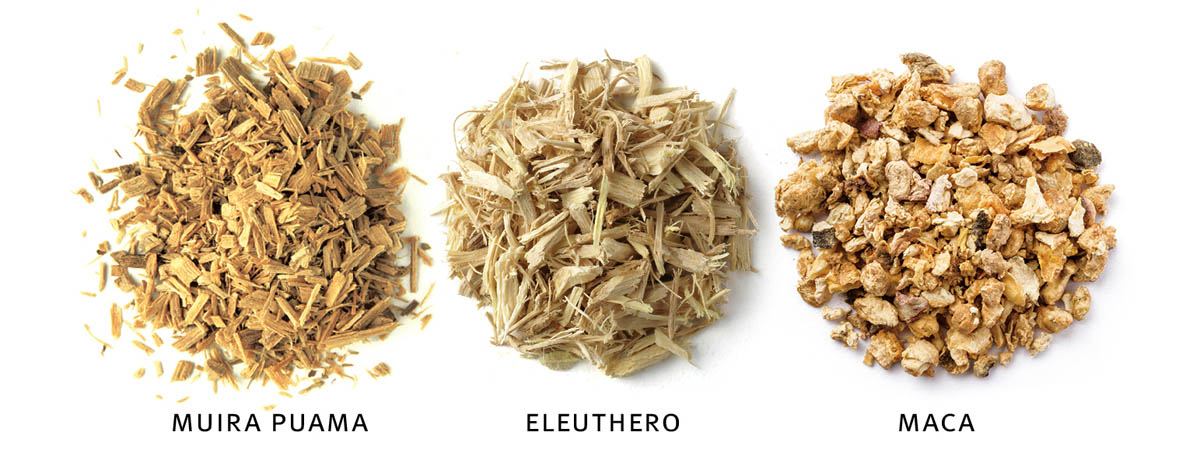
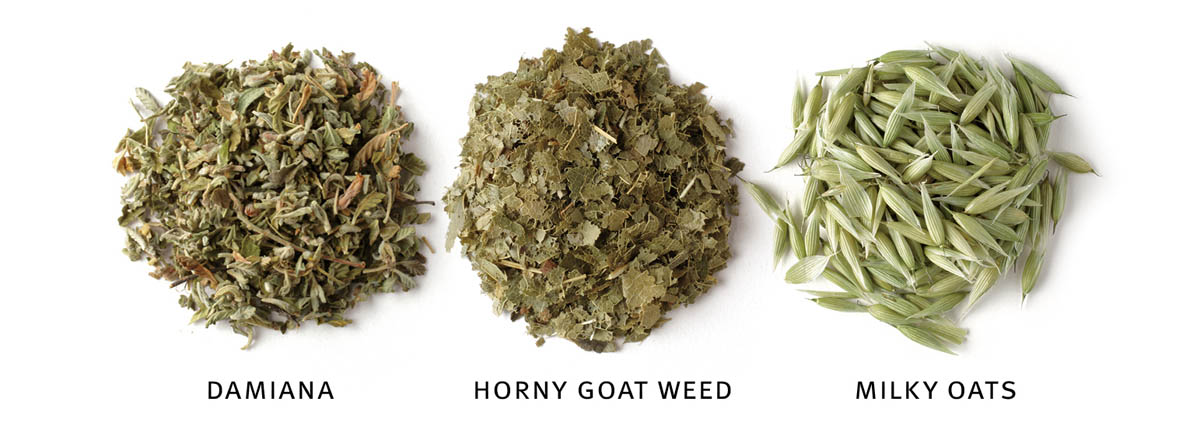
Combine the decoction herbs (muira puama, eleuthero, and maca) with the water in a pan. Cover and bring to a low simmer. Adjust the lid so that it’s partly ajar, so some of the steam can escape, and simmer until the liquid has been reduced by half.
Remove the pan from the heat, but don’t strain out the herbs. Immedietely add the infusion herbs (damiana, horny goat weed, and milky oats). Cover the pan tightly and let sit overnight.
The next day, strain out all the herbs through a stainless steel strainer lined with muslin or cheesecloth. Pour the tea into a pan, heat to a low simmer, and add honey to taste. Simmer, stirring frequently, until the syrup thickens slightly, 5 to 10 minutes. Then add the fruit concentrate and brandy, if using. Let cool, then store in the refrigerator.
To use: Take 2 to 4 tablespoons daily for 3 to 4 months.
Chyawanprash, a popular Ayurvedic herb formula, is a rejuvenative tonic that supports overall health, and in particular strength, immunity, and digestion. It is also said to support a healthy libido and sexual stamina. A mixture of powdered herbs, honey, and fruit, it is quite delicious and very nourishing. There are many variations; this is my own.

Combine all the herbs in a bowl and stir well. Add enough honey and, if you’re using them, fruit concentrate and rose water to form a thickish paste. If you use fruit concentrate, store the mixture in the refrigerator.
To use: Take 1 teaspoon two times daily, whether straight from the spoon, mixed with hot water as an instant tea, or mixed with enough unsweetened cocoa powder that you can roll it into balls.
This honey makes sweet work of the heart-healthy benefits of hawthorn.

Stir enough powdered herbs into your honey to make a thickish paste. Add the essential oil, if using.
To use: Take 1 teaspoon two times daily, whether straight from the spoon, mixed with hot water as an instant tea, or mixed with enough unsweetened cocoa powder that you can roll it into balls.
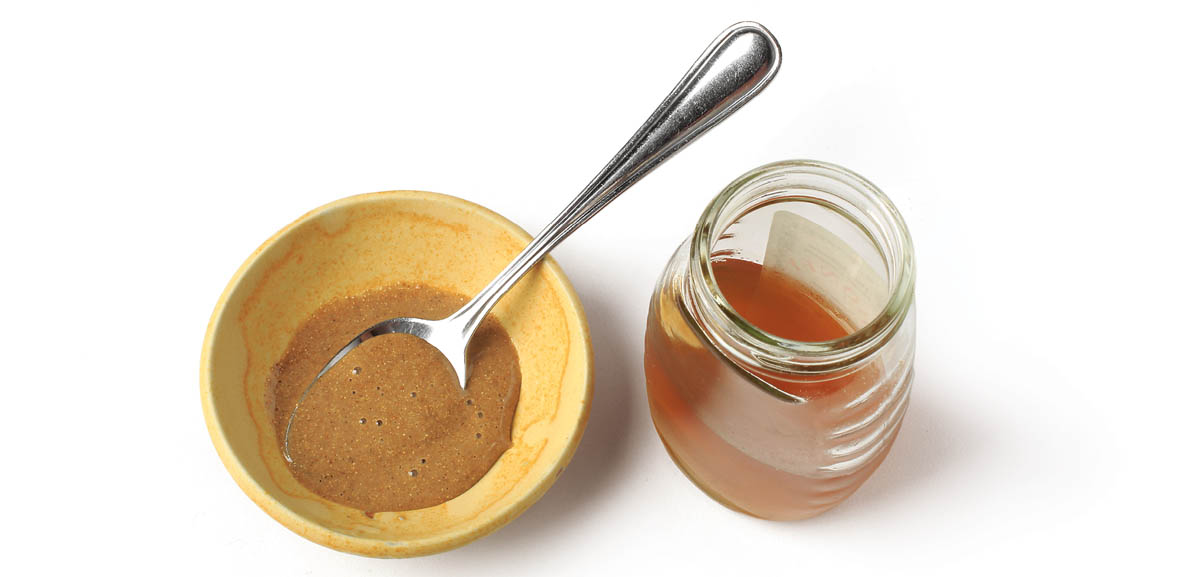
Ginseng is especially nice preserved in honey; the honey will take on the qualities of the ginseng and can be used in tea and in cooking. Fresh roots work best, but you can use dried ginseng roots if they are sliced thinly, well chopped, or powdered. And, of course, you can mix other herbs in with your ginseng honey. Try ashwagandha, maca, or rhodiola. For added flavor, try combinations of spices such as ginger, cinnamon, and cardamom.
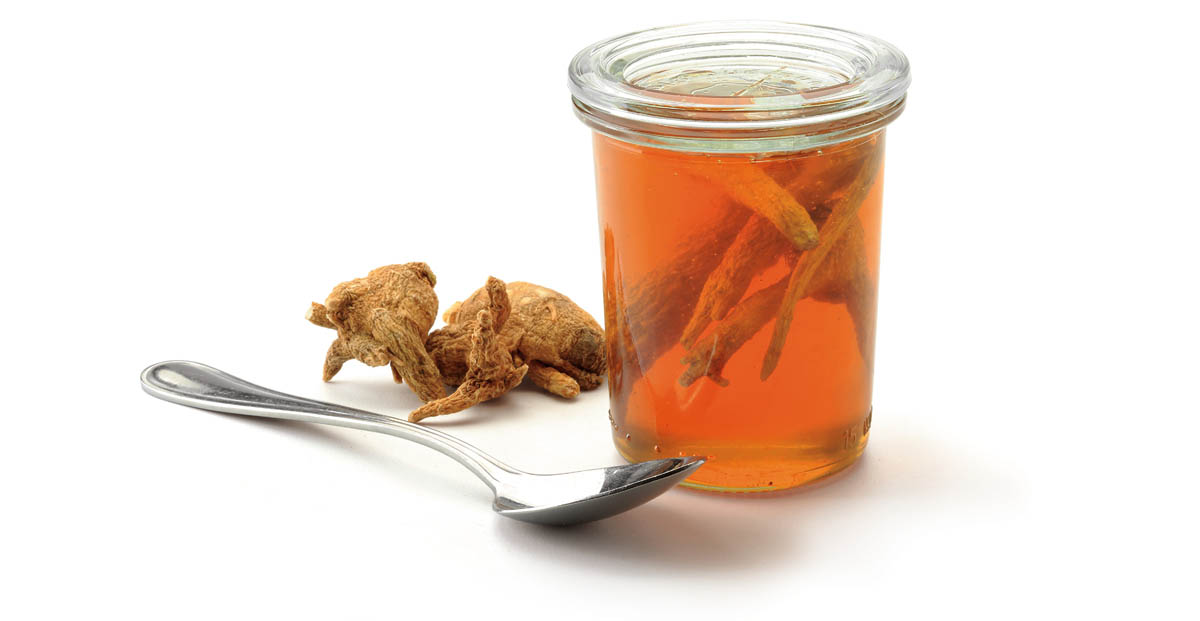
For fresh or dried ginseng: Slice or chop the ginseng root if it is whole. Place the ginseng in a widemouthed glass jar. Pour warmed honey over the ginseng, cover tightly, and let sit for 2 to 3 weeks. Then, if you wish, you can remove the ginseng slices, though I prefer to leave them in the honey pot.
For powdered ginseng: Stir enough powdered herb into your honey to make a thickish paste.
To use: Take 1 teaspoon two times daily, whether straight from the spoon or mixed with hot water as an instant tea.
There are literally thousands of recipes for chai, a spicy herbal tea originating in the regions of India, Nepal, and Tibet. This particular blend is based on traditional chai herbs but also includes a number of herbs specific for male health. Serve it hot or chilled, with or without milk.

Note: Most of these herbs can be bought in c/s (cut and sifted) form. While you can use powdered herbs, they settle on the bottom of the jar and are difficult to strain out.
Combine the cinnamon, ashwagandha, eleuthero, ginger, licorice, cardamom, peppercorns, and cloves. Mix well. Store in a glass jar with a tight-fitting lid.
To make tea, use 1 tablespoon of the herb mixture per 2 cups of water. Bring to a simmer and let gently simmer, covered, for 10 to 15 minutes. Remove from the heat and add 1 to 2 teaspoons black tea, if using. Let steep, covered, for 5 minutes.
Strain the mixture into a warmed teapot and add honey to taste. Serve in large mugs, topping each with a generous spoonful of warm milk, if you like, and a sprinkle of cinnamon, cocoa, and/or nutmeg (I like all three).
Note: Licorice is not recommended for individuals who have high blood pressure or are taking heart medication.
Kava relaxes the body, opens the heart, and stimulates the mind. Try a little kava before lovemaking — it nicely enhances body sensations. Legend says, where there’s kava, there can be only love . . . no stress, no anger, no disappointment, no greed. Bring on the kava!
We brew up 25 gallons of this basic chai recipe for the International Herb Symposium Grand Ball each year, using organic fresh kava that is shipped overnight from the Hawaiian farm of Tane Datta, a devoted United Plant Savers member. After brewing it, we add a super kava extract that Ed Smith and Sara Katz of Herb Pharm donate each year. No wonder it’s such a special party!
This recipe makes enough chai for a big party. For a single serving, combine the herbs, and use 1 tablespoon of the herb mixture per cup of water.

1. Combine the herbs and spices with the water. Bring to a simmer and let simmer gently, covered, for 3 to 4 hours, or until the kava flavor is quite strong and tingly.
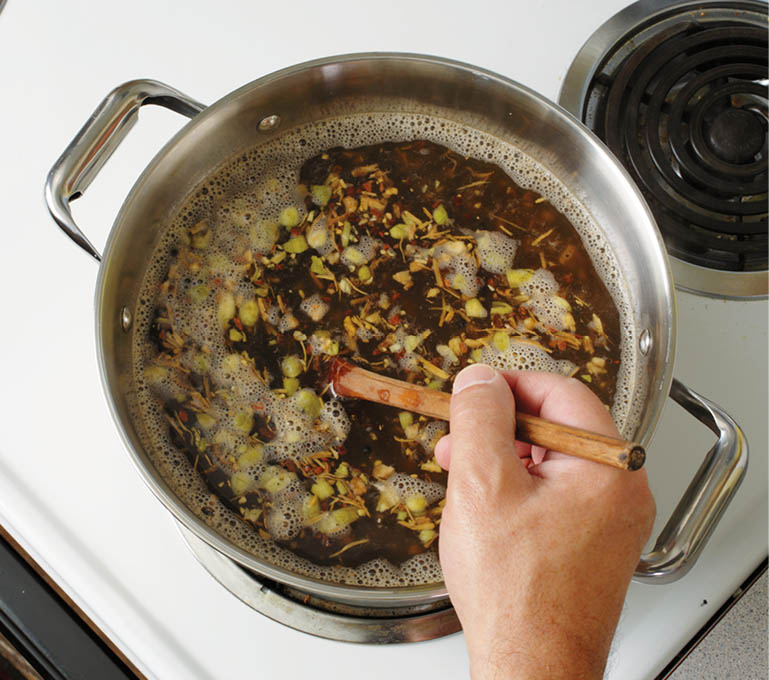
2. Remove from the heat and add coconut milk to taste. Let the mixture sit overnight.

3. The following morning, strain and sweeten with honey to taste. Add vanilla extract, if desired.

Note: Kava isn’t for everyone. Please read about the safety concerns for kava.
I often add a little ashwagandha, eleuthero, and/or rhodiola to this blend, approximately 1⁄4 cup of each. All are excellent adaptogens. And for extra flavoring, I often sprinkle my chai with cinnamon, cocoa, and/or nutmeg.
This flavorful, well-balanced tea used to be my personal favorite. It is a wonderful formulation for the male system and was one of the best-selling blends of the early Traditional Medicinals tea company I cofounded in the 1970s. However, the FDA banned the use of sassafras in food, so we had to remove it from our tea blend. I never felt it was as good afterward. You get to choose: sassafras or no? See the box at right for a discussion of the FDA’s safety concerns.
For the sarsaparilla, I use the East Indian variety (Smilax ornata) for its delicious vanilla-like flavor, but you can use local wild sarsaparilla if you prefer or the Jamaican variety (S. regelii), which is considered among the highest quality.

Combine the herbs and store in an airtight glass container. Prepare as a decoction, following the instructions.
To use: Drink 2 to 3 cups daily. Excellent served hot or cold. Try making it super strong, adding it to sparkling water, and serving over ice. It tastes just like the finest old-fashioned root beer — which, of course, it is!
Note: Licorice is not recommended for individuals who have high blood pressure or are taking heart medication.
Sassafras is cleansing to the entire system and stimulating for congestion in the liver and gallbladder. It has a grounding (yang) action and is often associated with the male system. A powerful astringent, it can be used externally for insect bites and internally for diarrhea and dysentery. I find it to be one of the best herbs for enhancing the flavor and healing properties of tonic drinks.
But sassafras is not mentioned often or used in teas anymore because it’s currently illegal to use for internal purposes. In the 1970s safrole, one of sassafras’s constituents, was isolated, extracted with chemical solvents (it’s not water soluble, which would mean that it doesn’t manifest in tea or other water-based brews), and tested on laboratory rats. It was found, not surprisingly, that in large amounts it produced carcinogenic cells in the rats. No human case of cancer from sassafras has ever been reported. The soft drink industry, which up to that time had been using pure sassafras extracts for flavoring root beer, was forced to substitute synthetic chemicals. Apparently the government thinks that synthetic chemicals are better for us. I continue to use sassafras personally because I know it’s a valuable, safe, and effective herb, although regulations prevent me from using it in my commercial formulas or recommending it to others. It’s up to you whether or not you use it yourself.

Sassafras
Considered the “king of all tonics,” ginseng boasts one of the best reputations in the herbal kingdom as a sexual tonic and adaptogen. Its botanical name, Panax, means “cure-all” in Greek, and it has long been highly regarded as a male tonic herb. In particular, ginseng restores sexual vitality and rebuilds and restores energy; see Ginseng, American (Panax quinquefolius) and Ginseng, Asian (Panax and related species) for a larger discussion of its other benefits.
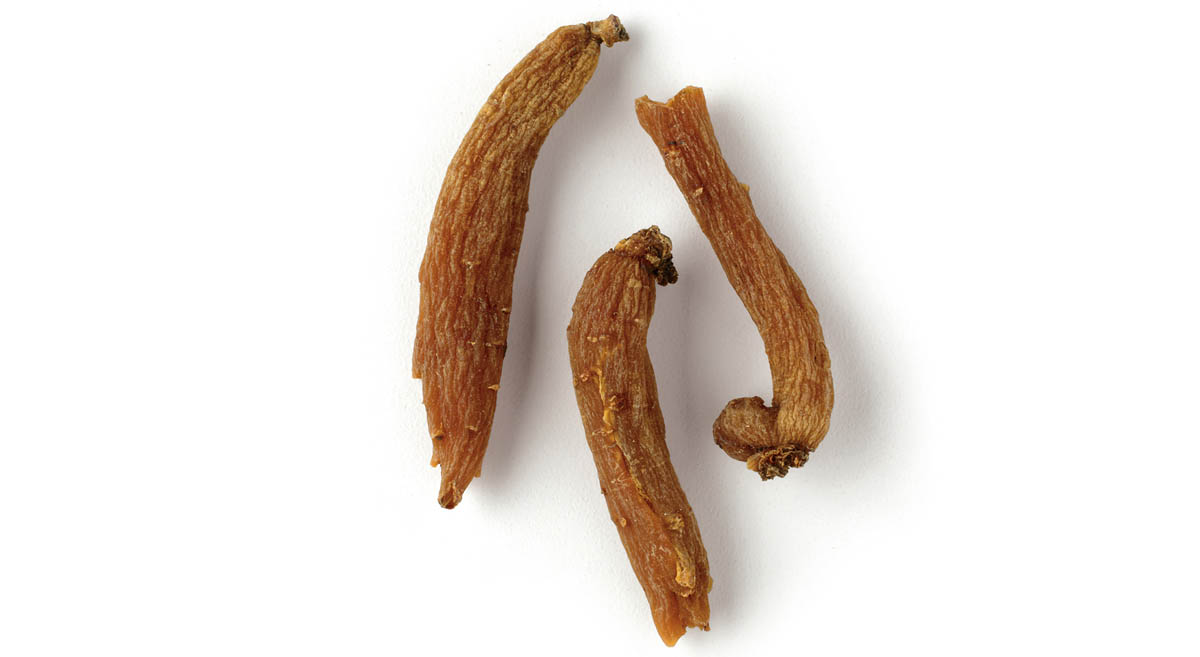
Place the root in a ginseng cooker and cover with the water. Tie the cooker shut, then place it in another pan filled with water. (Alternatively, place the root in the top of a double boiler, cover with the water, and set over the bottom half of the boiler, which should have a few inches of water in it.) Cook over low heat for 6 to 8 hours. Check the water level occasionally in the tea (and the bottom of the double boiler, if you’re using one) to be sure there is a sufficient amount. Remove from the heat and let the ginseng sit in the water overnight. Then strain.
To use: Drink all of the tea over the course of a day. According to herbalist Nam Singh, eating lightly or fasting for a few days before and after drinking the ginseng tea will enhance and facilitate the effects.
Though I’ve studied ginseng over the years, I learned the most about this remarkable herb from an equally remarkable man. Nam Singh was still a young man when I met him many years ago, but he was already considered a master herbalist. He had a very unusual life. Born in Philadelphia of African-American descent, he was sent to Taiwan as a young boy and was raised in a monastery by his elderly grandfather. He was instructed at a young age in the arts of tai chi, Chinese herbal medicine, and acupuncture. Still in practice almost 50 years later, he is renowned as a scholar, herbalist, and practitioner of the healing arts.
Nam Singh taught me most of what I know about Asian ginseng, and he also instructed me on how to prepare it using a traditional ceramic ginseng cooker, a type of double boiler made especially for preparing ginseng. Ginseng cookers can be quite ornate and beautiful works of art; however, it’s possible to purchase a plainer, reasonably priced one in most Chinese herb shops. If you can’t find one, a regular double boiler will do.
Nam Singh recommended fasting for 3 days prior to and after drinking ginseng tea. In traditional Chinese medicine, ginseng tea is taken in this fashion, with fasting, once or twice a year rather than being consumed daily, as is often done in this country. Nam Singh also recommended using ginseng regularly in soups, broths, and tonic wines, thus employing it as both a medicine and a food.
Tonic wines (jiu) were popular with the ancient Daoists and are still made in China today. According to one legend, the sage Li Ch’ing died in 1930 at the age of 252, having outlived several wives and many of his children. His long life was helped by a small glass of Korean ginseng tonic wine mixed with he shou wu (flowery knotweed) and taken each evening before bed.
— Nam Singh
A nourishing and delicious formula, Vital-a-Tea is formulated for its high vitamin and mineral content. Drink several cups a day if you’re feeling exhausted and depleted. You’ll experience its restorative properties within a few days.

Combine the herbs and store in an airtight glass container. Prepare as an infusion following the instructions.
To use: Drink 3 to 4 cups daily.
Though it’s not often mentioned in herbal literature, hawthorn is a wonderful remedy for “broken hearts,” depression, and anxiety. It is a specific medicine for men who have a difficult time expressing their feelings or who suppress their emotions.
More subtly, hawthorn has the power to begin addressing deep emotional wounds or long unexpressed sentiments that weigh heavily on the heart.
— Guido Masé, herbalist
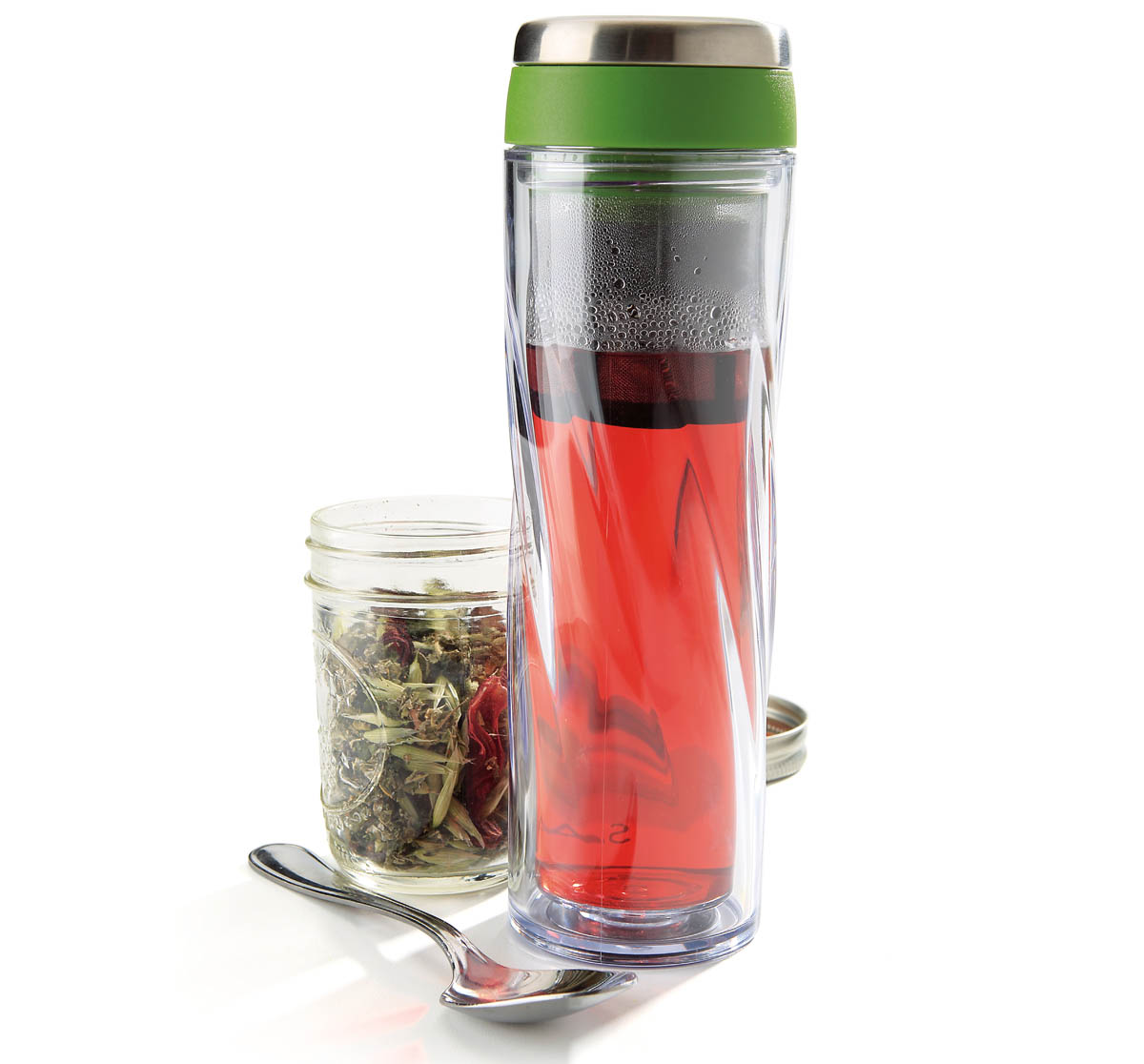
Bathing takes a few minutes longer than a shower, but the results are twice as good. You get clean, yes, but you also relax muscles, reduce stress, calm the mind, and invigorate the spirit. Sounds too good to be true? Try it! People have been practicing the art of hydrotherapy for centuries. In years past, health spas throughout Europe and the United States devoted themselves entirely to the art of bathing. In fact, until the twenty-first century, hydrotherapy was an essential component of many medical practices. But like so many good health practices of old, herbal bathing, like the proverbial baby, was “thrown out with the bathwater” — to the detriment of us all!
It will take a little bit of time — about 20 minutes — and a small amount of work (boiling water/making tea), but the health benefits of herbal bathing are well worth it. Following are some of my favorite formulas for the bath. Use them following the instructions. Though not quite as effective, herbal footbaths can also be used and are easier for some people; they are especially helpful for reducing headaches, tension, and sore feet.
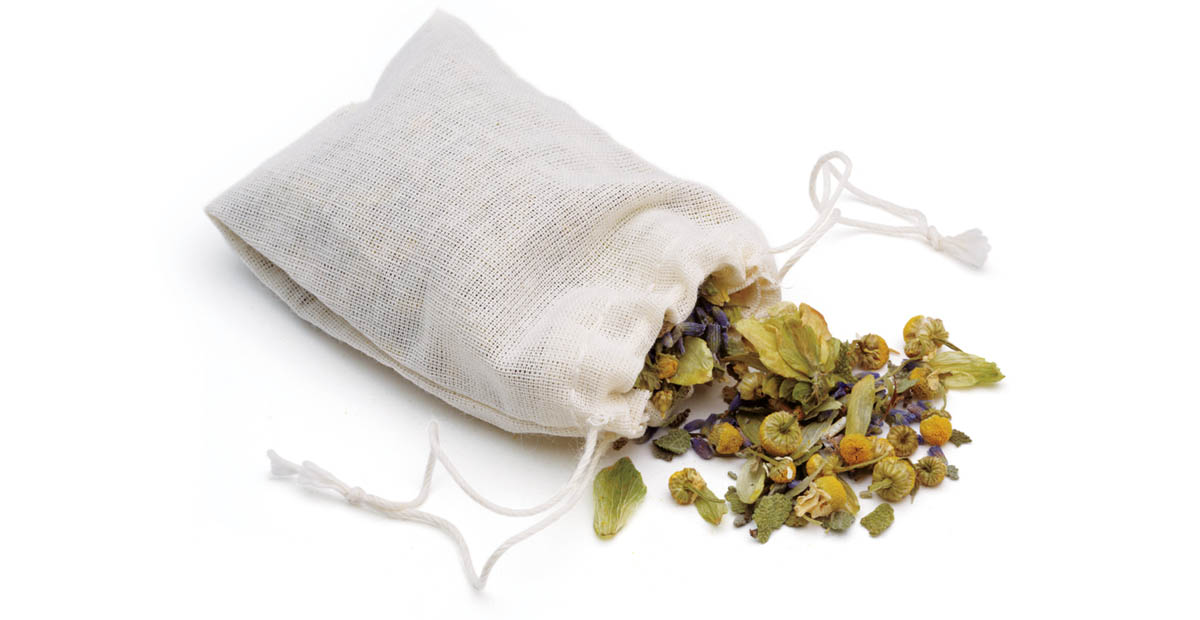
Pure essential oils can enhance the bathing experience enormously. However, be extremely cautious when using essential oils. They are extremely concentrated extracts of plants and are very potent, even when added to the bathwater. I hate to admit this, but my first marriage may have ended because of a peppermint oil bath (though we remained steadfast friends)! My dear (ex) husband, very ill and feverish with a flu, stepped into a therapeutic bath I had prepared for him. But much to my chagrin (and his as well), I had mistakenly added peppermint essential oil instead of eucalyptus. The poor man let out a howl that I remember to this day. I always liked to remind him that he was, after all, completely well the next day. He always insisted, instead, that he never dared to let me know when he was ill again! The moral of this story? Don’t add peppermint oil to the bathwater of those you wish to keep around.
Date night? Try this sensuous blend, on your own or with your partner.
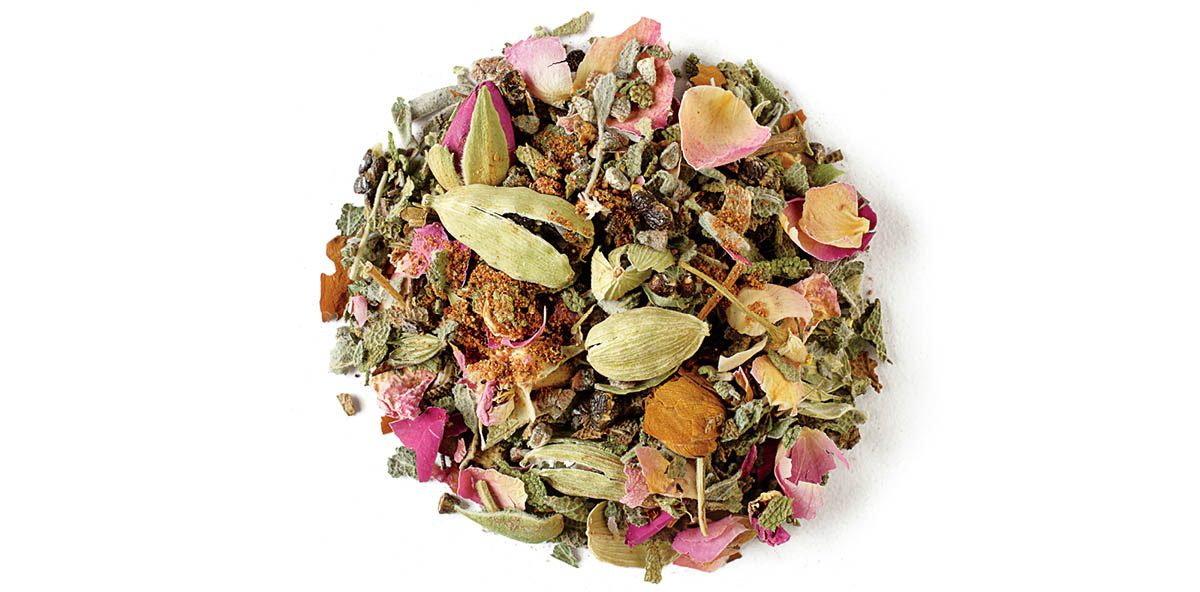
Sore muscles will benefit from soaking in this eucalyptus, sage, and pine blend.
